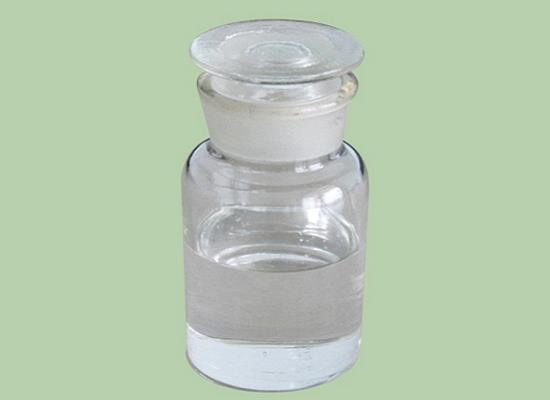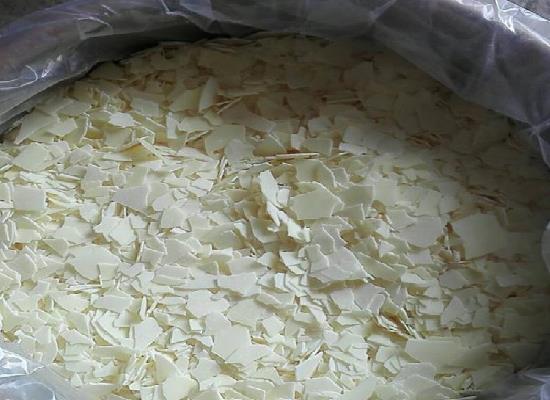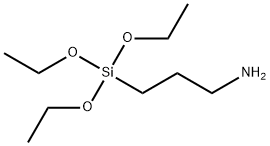3-Aminopropyltriethoxysilane: deposition methods and biosensing applications
Jul 31,2023
General Description
Deposition methods, such as solution and gas phase, are commonly employed to enhance the biocompatibility and sensing performance of oxidized surfaces using 3-aminopropyltriethoxysilane. In the solution phase, the process involves cleaning the surface, acid treatment, immersion in a 3-aminopropyltriethoxysilane solution, rinsing, and drying. In the gas phase, surface cleaning, acid treatment, exposure to 3-aminopropyltriethoxysilane vapor, and heat treatment are applied for deposition. 3-Aminopropyltriethoxysilane is widely used for immobilizing biomolecules in biosensing applications, including enzymes, antibodies, and DNA. It offers stable linkages, preserving activity and specificity. Furthermore, 3-aminopropyltriethoxysilane helps prevent non-specific adsorption by forming a protective layer on the sensor surface, reducing interference with target analyte detection.
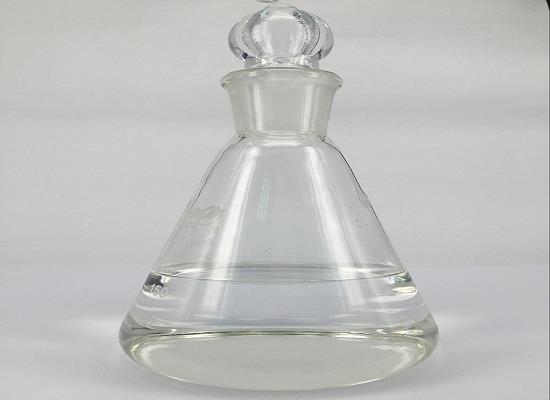
Figure 1. 3-Aminopropyltriethoxysilane
Deposition methods
3-Aminopropyltriethoxysilane is a commonly used silane coupling agent for treating oxidized surfaces in both solution and gas phases. In biosensing applications, 3-aminopropyltriethoxysilane can be utilized to enhance the biocompatibility and sensing performance of oxidized surfaces.
Solution phase
In the solution phase, the deposition method for 3-aminopropyltriethoxysilane typically involves several steps. Firstly, the oxidized surface undergoes thorough cleaning using deionized water, ethanol, or other suitable solvents to remove impurities. Subsequently, an acid treatment is employed to increase the number of surface hydroxyl groups, which facilitates the deposition of 3-aminopropyltriethoxysilane. The oxidized surface is then immersed in a solution of 3-aminopropyltriethoxysilane prepared in ethanol, methanol, or another suitable solvent. The deposition time can vary depending on specific requirements and typically ranges from minutes to hours. Following deposition, the surface is thoroughly rinsed to remove any unreacted 3-aminopropyltriethoxysilane and impurities, and it is subsequently dried either by air-drying or using nitrogen gas. 1
Gas phase
In the gas phase, the 3-aminopropyltriethoxysilane deposition method comprises similar initial steps of surface cleaning and acid treatment to increase the surface hydroxyl groups. Subsequently, the oxidized surface is exposed to 3-aminopropyltriethoxysilane vapor generated by heating 3-aminopropyltriethoxysilane at an appropriate temperature. The 3-aminopropyltriethoxysilane vapor reacts with the surface hydroxyl groups, forming Si-O-Si bonds and achieving deposition. Heat treatment may be conducted after deposition to promote further polymerization and cross-linking of 3-aminopropyltriethoxysilane, typically using equipment such as ovens or heating plates. 3-Aminopropyltriethoxysilane deposition methods, whether in the solution or gas phase, are adaptable for modifying oxidized surfaces to enhance their biocompatibility and sensing performance. These methods can be adjusted and optimized based on specific application requirements and experimental conditions. 2
Biosensing applications
Immobilization of biomolecules
3-Aminopropyltriethoxysilane is commonly used in biosensors for the immobilization of biomolecules such as enzymes, antibodies, and DNA. 3-Aminopropyltriethoxysilane reacts with the amino groups present on these biomolecules, allowing them to be fixed onto the surface of the sensing platform. In enzyme sensors, 3-aminopropyltriethoxysilane facilitates the attachment of enzymes to the sensor surface, ensuring their close proximity to the transducer for efficient catalytic activity. For immunosensors, 3-aminopropyltriethoxysilane enables the immobilization of antibodies, which can selectively bind to target molecules, generating a measurable signal. In DNA sensors, 3-aminopropyltriethoxysilane is used to immobilize DNA probes, enabling the specific capture of complementary target DNA sequences. The use of 3-aminopropyltriethoxysilane for biomolecule immobilization offers stable and covalent linkages between the sensor surface and the biomolecules, preserving their activity and specificity. It enhances the stability and longevity of the immobilized biomolecules, resulting in reliable and long-term sensor performance. 3
Preventing non-specific adsorption
3-Aminopropyltriethoxysilane is widely utilized in biosensors to prevent non-specific adsorption on the sensing platform. Non-specific adsorption refers to the unwanted binding of biomolecules or other substances to the sensor surface, which can interfere with the accurate detection of target analytes. 3-Aminopropyltriethoxysilane addresses this issue by forming a protective layer on the sensor surface through its reaction with the hydroxyl groups present on the sensing platform. The amino group of 3-aminopropyltriethoxysilane reacts with the hydroxyl groups, resulting in the formation of Si-O-Si bonds that covalently attach 3-aminopropyltriethoxysilane to the surface. This process is called silanization. By modifying the surface with 3-aminopropyltriethoxysilane, the hydroxyl groups on the sensor surface become occupied by the 3-aminopropyltriethoxysilane molecules, effectively covering and blocking them. This prevents biomolecules or other substances from directly binding to the hydroxyl groups, reducing non-specific adsorption. 4
Reference
1. Sypabekova M, Hagemann A, Rho D, Kim S. Review: 3-Aminopropyltriethoxysilane (APTES) Deposition Methods on Oxide Surfaces in Solution and Vapor Phases for Biosensing Applications. Biosensors (Basel), 2022, 13(1):36.
2. Zhang F, Sautter K, Larsen AM, Findley DA, Davis RC, Samha H, Linford MR. Chemical vapor deposition of three aminosilanes on silicon dioxide: surface characterization, stability, effects of silane concentration, and cyanine dye adsorption. Langmuir, 2010, 26(18):14648-14654.
3. Vashist SK, Lam E, Hrapovic S, Male KB, Luong JH. Immobilization of antibodies and enzymes on 3-aminopropyltriethoxysilane-functionalized bioanalytical platforms for biosensors and diagnostics. Chem Rev, 2014, 114(21):11083-11130.
4. Kim JK, Shin DS, Chung WJ, et al. Effects of polymer grafting on a glass surface for protein chip applications. Colloids & Surfaces B Biointerfaces, 2004, 33(2):67-75.
- Related articles
- Related Qustion
- The Multifaceted Role of 3-Aminopropyltriethoxysilane in Modern Chemistry May 22, 2024
3-Aminopropyltriethoxysilane widely utilized in the fields of materials science, organic chemistry, and surface engineering.
- What is the effect of water on 3-aminopropyltriethoxysilane (APTES)? May 17, 2024
The effect of water on the reaction of 3-aminopropyltriethoxysilane (APTES) with mesoporous silica is investigated by Gartmann et al. on two model systems.
- Applications of 3-Aminopropyltriethoxysilane Nov 1, 2019
3-Aminopropyltriethoxysilane(APS) is an aminosilane frequently used in the process of silanization, the functionalization of surfaces with alkoxysilane molecules.
Fluoroboric acid is a strong Lewis acid, forms stable complexes, used in dental implants and PZT etching. However, corrosive and requires caution.....
Jul 31,2023APIVeratraldehyde is a colorless solid and can react with compounds, forms new organic compounds with potential as antitumor and antibacterial agent; caution regarding toxicity.....
Jul 31,2023API3-Aminopropyltriethoxysilane
919-30-2You may like
3-Aminopropyltriethoxysilane manufacturers
- 3-Aminopropyltriethoxysilane
-

- 2025-12-03
- CAS:919-30-2
- Min. Order:
- Purity: 0.99
- Supply Ability:
- 3-Aminopropyltriethoxysilane
-

- $0.00 / 200Kg/Drum
- 2025-12-03
- CAS:919-30-2
- Min. Order: 1Kg/Drum
- Purity: 99%
- Supply Ability: 2000mt/year
- 3-Aminopropyltriethoxysilane
-
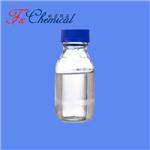
- $0.00 / 190KG
- 2025-12-03
- CAS:919-30-2
- Min. Order: 190KG
- Purity: 98%min
- Supply Ability: 30tons/month




